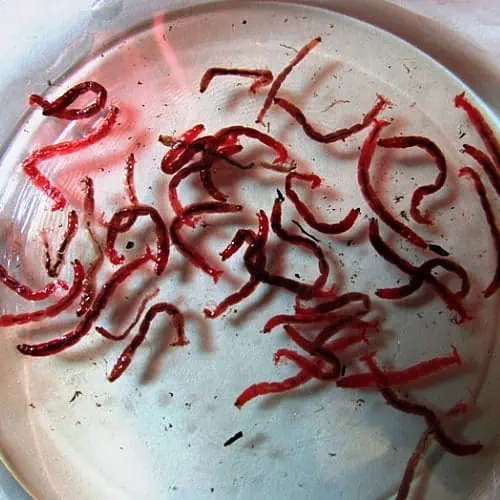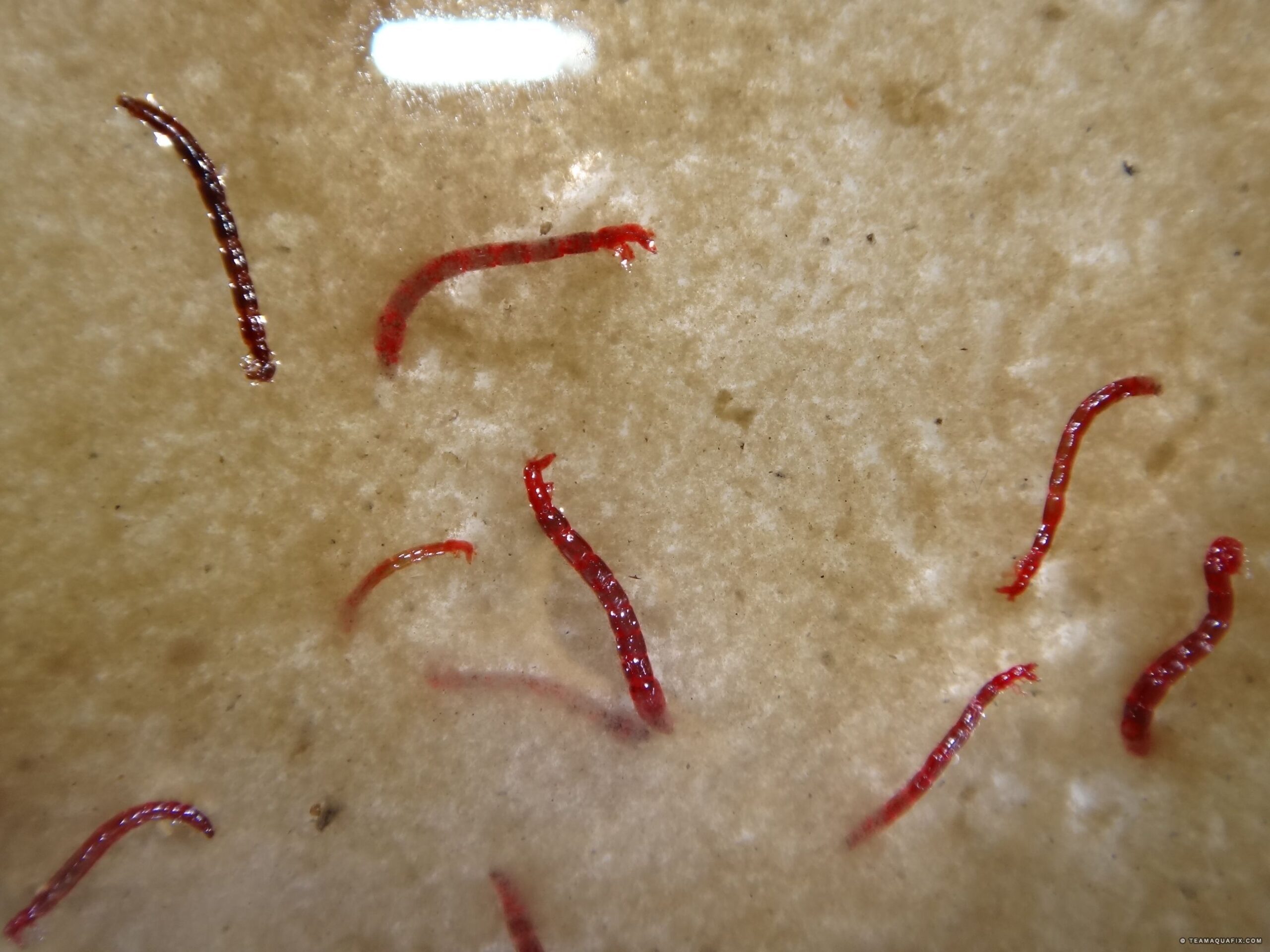Red worms, or red wigglers, are a type of earthworm. They’re often used as bait for fishing and live in compost bins where they help break down organic matter.
While most earthworms are beneficial to gardens and lawns, red wigglers can be a nuisance if they invade flower beds or potted plants.
If you’ve ever found small red worms in your home, don’t panic! These little creatures are actually helpful for your garden.
Red wigglers, or Eisenia fetida, are a type of earthworm that thrives in compost.
They help break down organic matter so it can be used as nutrient-rich fertilizer for your plants.
If you have a backyard compost bin, chances are you’ve already seen red wigglers at work.
These worms consume things like coffee grounds and vegetable scraps, then excrete them as “castings” that are full of essential nutrients like nitrogen and phosphorus.
In other words, they turn trash into treasure! Not only do red wigglers benefit your garden, but they’re also low-maintenance pets.
They don’t need to be fed very often (once a week is usually sufficient), and they don’t need a lot of space; a small container will do just fine.
Plus, they’re pretty fun to watch as they wiggle their way through the compost pile!
Are Red Worms Harmful to Humans?
Red worms, or red wigglers, are a type of earthworm that is often used in composting. They are small, red, and wriggly, hence their name.
While they are not harmful to humans, there are a few things to be aware of when handling them.
First and foremost, red worms can carry diseases that can be transmitted to humans if they come into contact with your skin or open wounds.
It’s important to wash your hands thoroughly after handling them.
Secondly, while they don’t pose a threat to adults, young children and pets may be tempted to put them in their mouths.
This can cause stomach upset and vomiting. If your child or pet does ingest a red worm, please call your doctor or veterinarian immediately.
Overall, red worms are not harmful to humans but it’s important to take precautions when handling them.
If you have any concerns, please consult with your doctor or another medical professional.
Are Red Worms Dangerous?
As you might expect, red worms are not dangerous. In fact, they are quite beneficial for your garden.
These little creatures help to aerate the soil and break down organic matter, which helps to improve plant growth.
They also provide a food source for other animals such as birds and reptiles. So if you see red worms in your garden, don’t be alarmed – they’re actually doing you a favor!
Tiny Red Worms in Soil
If you’ve ever found small red worms in your soil, chances are they’re not harmful. These tiny creatures are actually beneficial to the health of your garden.
Here’s a closer look at these helpful critters and what they can do for your plants.
Tiny red worms, or nematodes, are found in healthy soils all over the world. They help break down organic matter, making nutrients more available to plants.
Nematodes also help aerate the soil and control pests like grubs and root-knotting insects.
While most nematodes are beneficial, there are a few species that can damage plant roots.
If you find large numbers of root-damaging nematodes in your soil, you may need to take steps to improve the health of your soil before planting anything else.
If you suspect you have a problem with root-damaging nematodes, it’s best to consult with a local extension office or nursery before taking any action.
They can help you confirm whether or not you have a problem and recommend the best course of treatment.
Small Red Worms in Horses
If you’ve ever found small red worms in your horse’s manure, you may be wondering what they are and if they’re harmful.
These worms are actually a type of roundworm called Strongyloides westeri.
Although they’re not generally harmful to horses, they can cause problems if your horse ingests a large number of them.
These worms live in the horse’s intestine and mature into adults within 2-3 weeks.
The adult females lay eggs which hatch into larvae within 10-12 days. The larvae then travel through the horse’s body and are excreted in the manure.
Once outside of the horse, the larvae develop into infective stages that can penetrate a horse’s skin or be ingested when they eat contaminated grass.
There is no effective treatment for strongyloides infection in horses, so prevention is key.
Good hygiene practices, such as removing contaminated manure from pastures and stalls, will help reduce the chances of your horse becoming infected.
You should also avoid grazing your horse on pastures where other animals have been known to defecate.
Small Red Worms in Dog Water
If you notice small red worms in your dog’s water bowl, don’t panic! These are most likely just harmless filter feeders called tube worms.
However, it’s always best to consult with your veterinarian to be sure.
Tube worms are common in both fresh and salt water environments.
They are often found near the shoreline where they attach themselves to rocks or other surfaces.
The tube worm gets its name from the hollow tube-like structure it builds around itself for protection.
These little creatures help keep our waterways clean by filtering out microscopic organisms and algae from the water.
In return, they get a steady supply of food to eat. While they are generally harmless, there are some species of tube worms that can be poisonous if ingested.
So, if you’re not sure what kind of worm your dog has eaten, it’s always best to err on the side of caution and call your vet right away.
How to Get Rid of Red Worms in Water?
If you’ve ever found red worms in your water, you know how gross it can be.
Not to mention, these little critters can actually pose a health risk to humans and animals alike. So, how do you get rid of red worms in water?
The first step is to identify the source of the infestation. If you have an aquarium, for example, the worms may have come from infected fish food or plants.
If your home has a well, the worms could be coming from contaminated groundwater.
Once you’ve identified the source, take steps to eliminate it. If you have an aquarium, remove all of the fish and clean out the entire tank with bleach or another strong disinfectant.
Be sure to rinse the tank thoroughly before adding new fish or plants.
If your home has a well, have it professionally inspected and treated if necessary.
Once you’ve eliminated the source of the problem, take steps to prevent future infestations by keeping your water clean and free of debris.
Regularly clean your aquarium or change out the water in your well.
And be sure to properly dispose of any unused fish food or plant material, don’t let it sit around where it could attract more red worms!
Red Worms in Water Harmful to Horses
While there are many different types of worms that can affect horses, red worms are one of the most common and dangerous.
These parasites live in the horse’s gut and feed on their blood, causing damage to the lining of the intestine. In severe cases, they can cause anemia or even death.
There are a few ways to tell if your horse has red worms. The most obvious sign is weight loss, as these parasites steal nutrients from their host.
You may also notice them coughing or grinding their teeth, as well as diarrhea or colic.
If you suspect your horse has red worms, it’s important to have them checked by a veterinarian so they can prescribe the appropriate treatment.
Preventing red worm infestations in horses is mainly about keeping pasture areas clean and free of manure.
Regular deworming with products like ivermectin will also help reduce the risk of infection.

Credit: pondinformer.com
Are Bloodworms Harmful to Humans?
No, bloodworms are not harmful to humans. In fact, they are often used as fishing bait because they are so good at attracting fish.
Bloodworms get their name from the fact that they have red sap in their bodies which looks like blood.
This sap is not actually blood, but it does contain a lot of iron which is why it is red.
Why are There Red Worms in My House?
If you’ve found red worms in your house, there’s no need to panic. These common household pests are usually harmless and pose no threat to humans or animals.
However, they can be a nuisance if they’re not controlled.
Here’s everything you need to know about red worms in your home, including how to get rid of them.
Red worms, also known as fly larvae or drain flies, are small, dark-colored insects that typically measure 1/8 to 1/4 inch long.
They have a segmented body with bristles on their hind legs that help them swim through liquid.
The larvae stage is the only time in their life cycle when they have this worm-like appearance; as adults, they look like small flies.
Red worms thrive in damp environments and are often found near drains, sewage systems, and other sources of standing water.
These pests are attracted to decaying organic matter such as food scraps or animal feces.
This is why you’ll often find them near kitchen sinks or in pet areas of the home.
If there’s enough moisture available, red worms can rapidly multiply and quickly become a problem.
While red worms don’t bite or sting humans, their presence can still be unsettling.
Large populations of these pests can indicate that there’s an underlying issue with moisture in your home (which can lead to mold growth).
Are Bloodworms Harmless?
As their name suggests, bloodworms are small, red worms that live in water. While they may look dangerous, they are actually harmless to humans.
Bloodworms get their red color from the hemoglobin in their bodies, which helps them breathe under water.
These creatures are often used as bait for fishing, as well as food for pet reptiles and fish.
Although they are safe for us to eat, bloodworms can be a bit of a shock to the system if you’re not used to them!
What Do Bloodworms Turn Into?
If you’ve ever gone fishing, chances are you’ve used bloodworms as bait. But what exactly are these wriggly red creatures?
Bloodworms are actually the larvae of certain species of midge fly. Midges are small, non-biting flies that resemble mosquitoes.
The larvae stage is when bloodworms are fully grown but have not yet transformed into their adult fly form.
When bloodworms are ready to pupate, they burrow into mud at the bottom of a body of water and create a cocoon around themselves.
Within this cocoon, the larva undergoes metamorphosis and transforms into an adult midge fly.
Once it hatches from the cocoon, the adult fly will mate and lay eggs, starting the cycle all over again!
While most people think of them as nothing more than pesky insects, midges actually play an important role in many ecosystems.
For example, they provide food for fish, birds, and other animals. They also help keep mosquito populations in check by competing with them for food and breeding sites.
So next time you see a swarm ofmidges near a lake or pond, remember that they’re not just nuisances they’re actually vital members of the ecosystem!
Conclusion
If you’ve ever found small red worms in your house, they’re not harmful. These little critters are called dust mites, and they feed on the dead skin cells that we shed every day.
Dust mites are too small to be seen with the naked eye, but they can cause allergic reactions in some people.
If you have asthma or allergies, you may want to take steps to get rid of dust mites in your home.

